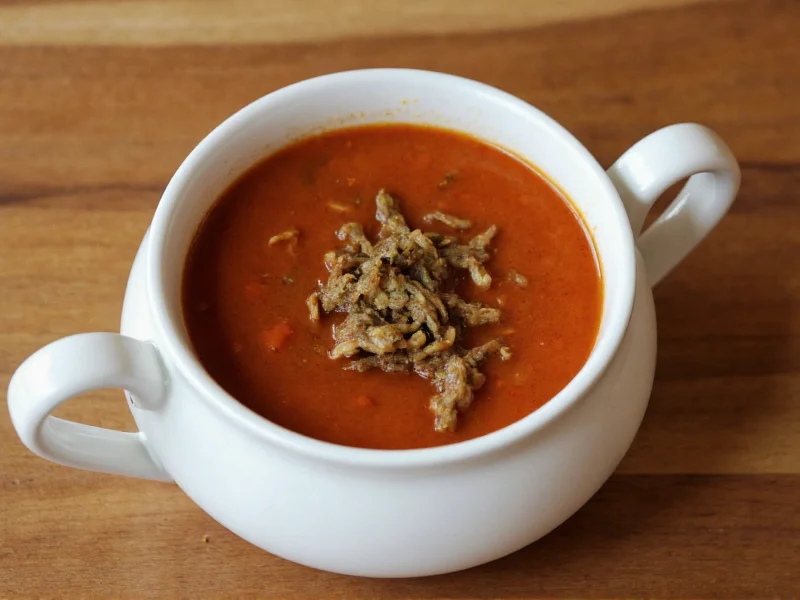Mock turtle soup represents one of America's most fascinating culinary adaptations, emerging during a time when genuine turtle soup had become a status symbol among wealthy diners but faced sustainability and accessibility challenges. This ingenious substitute allowed middle-class households to enjoy a dish that mirrored the appearance and mouthfeel of the exclusive original while using more readily available ingredients.
The Historical Context of Mock Turtle Soup
During the early 1800s, real turtle soup made from sea turtles was considered a delicacy among America's elite. Harvested primarily from Caribbean waters, these reptiles became increasingly difficult to obtain as demand grew. By the mid-19th century, turtle populations were declining significantly, making authentic turtle soup prohibitively expensive for all but the wealthiest families.
Chefs and home cooks began experimenting with alternatives that could replicate the unique texture and rich flavor profile of turtle meat. The breakthrough came when culinary innovators discovered that calf's head—particularly the brain, eyes, and other delicate parts—could be prepared to mimic the distinctive gelatinous texture of turtle meat. This clever substitution gave birth to what we now know as mock turtle soup.
Traditional Ingredients and Preparation Methods
The authentic preparation of mock turtle soup relies on specific techniques that transform humble ingredients into something remarkably turtle-like. Traditional recipes typically include:
| Key Ingredient | Role in Mock Turtle Soup | Historical Significance |
|---|---|---|
| Calf's head | Provides gelatinous texture similar to turtle meat | Readily available alternative to scarce sea turtle |
| Sherry or Madeira wine | Enhances flavor complexity | Traditional addition in 19th-century European sauces |
| Hard-boiled eggs | Simulates turtle eggs in the soup | Visual element mimicking authentic presentation |
| Vinegar and spices | Creates distinctive tangy flavor profile | Reflects British culinary influences on American cooking |
The preparation process involves simmering the calf's head for many hours until the collagen breaks down into gelatin, creating that signature mouth-coating texture. Skilled cooks would then carefully dice the meat to resemble turtle pieces, often arranging hard-boiled egg slices to mimic turtle eggs floating in the broth. The addition of sherry or Madeira wine provided the distinctive flavor profile that made this imitation truly convincing.
Cultural Significance and Literary Connection
Mock turtle soup gained widespread recognition beyond the kitchen when Lewis Carroll featured it in his 1865 classic Alice's Adventures in Wonderland. In the chapter "The Mock Turtle's Story," Carroll created the melancholy character of the Mock Turtle, who laments being made from calf rather than real turtle. This literary reference cemented the soup's place in cultural history and explains why many people today recognize the term "mock turtle" primarily through this connection.
The soup's popularity reflected broader social dynamics of the time. As genuine turtle soup became a symbol of conspicuous consumption, mock turtle soup represented democratic dining—allowing middle-class Americans to participate in culinary trends previously reserved for the elite. This democratization of fine dining through clever substitution became a recurring theme in American culinary history.
Modern Interpretations and Availability
While traditional mock turtle soup has largely disappeared from mainstream menus, it maintains a dedicated following among culinary historians and specialty restaurants. Some high-end establishments occasionally feature it as a historical curiosity or seasonal specialty, particularly around holidays when traditional dishes see renewed interest.
Contemporary chefs have developed vegetarian adaptations of mock turtle soup using mushrooms, lentils, and other plant-based ingredients to replicate the texture and umami flavor. These modern interpretations appeal to both ethical diners and those interested in culinary history without requiring animal byproducts.
The enduring legacy of mock turtle soup demonstrates how culinary innovation often arises from necessity. When faced with resource constraints, cooks throughout history have demonstrated remarkable creativity in developing substitutes that honor tradition while adapting to changing circumstances—a lesson that remains relevant in today's sustainability-focused food culture.
Why is it called mock turtle soup if it contains no turtle?
Mock turtle soup earned its name because it was specifically designed to imitate the appearance, texture, and flavor of genuine turtle soup without using actual turtle meat. The term "mock" refers to its status as a deliberate imitation created as an affordable alternative when real sea turtles became scarce and expensive.
What gives mock turtle soup its distinctive texture?
The distinctive gelatinous texture of traditional mock turtle soup comes from slow-cooking calf's head, which releases collagen that transforms into gelatin during the cooking process. This creates the same mouth-coating consistency found in authentic turtle soup, which naturally contains high levels of collagen from turtle shells and connective tissues.
Is mock turtle soup still made today?
While not common in everyday dining, mock turtle soup is still prepared by specialty restaurants, historical reenactors, and culinary enthusiasts. Some traditional American restaurants, particularly in the Midwest and Mid-Atlantic regions, occasionally feature it as a seasonal specialty or historical menu item. Culinary historians also prepare it using period-accurate recipes for educational purposes.
How did mock turtle soup become associated with Alice in Wonderland?
Lewis Carroll featured mock turtle soup in his 1865 novel "Alice's Adventures in Wonderland" by creating the character of the Mock Turtle, who explains he's called that because he's made from calf rather than real turtle. This literary reference popularized the term and created a lasting cultural association between the soup and Carroll's work, though the soup itself predates the novel by several decades.
What's the difference between mock turtle soup and traditional turtle soup?
Traditional turtle soup uses actual sea turtle meat, which was considered a luxury item in the 18th and 19th centuries. Mock turtle soup substitutes calf's head and other beef products to replicate the texture and flavor. The key differences include ingredients (turtle vs. calf), historical availability (turtle became scarce while calf remained accessible), and cost (mock version was significantly more affordable for middle-class households).











 浙公网安备
33010002000092号
浙公网安备
33010002000092号 浙B2-20120091-4
浙B2-20120091-4